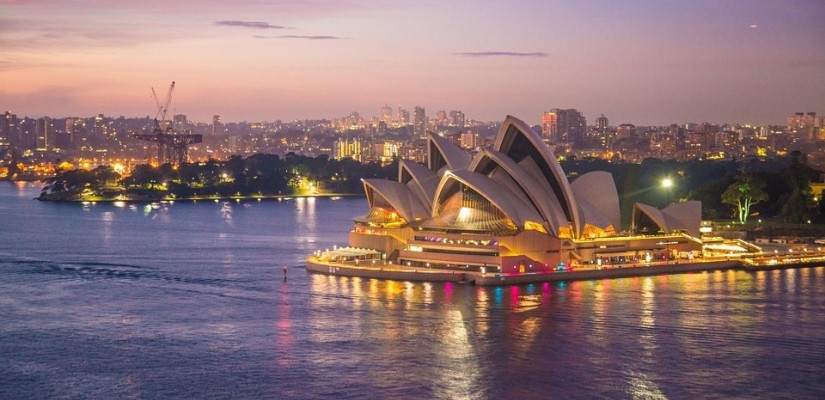There are two vital aspects in Australia’s energy strategy, an opportunity and a weakness. Firstly, the country plans to increase the ratio of renewable energy in its national energy mix – an opportunity. Secondly, Australia’s energy supply strategy appears to be on unstable footing as the country seeks to increase liquefied natural gas (LNG) imports in order to satisfy domestic energy demand – a weakness. Australia’s plans to import LNG unveils a flaw in its domestic energy supply strategy, since Australia is one of the world’s largest LNG exporters, competing with Qatar for the spot of the global top LNG exporter. Technically, the country should not have to depend on LNG imports. Practically, though, contracts with overseas partners to export LNG deprive the country of the opportunity to cover national energy demands at peak times. In an attempt to fill domestic energy gaps, the Australian government has also supported a long-time hydropower project, the Snowy Mountains Scheme, to supplement wind and solar energy supply.
Australia is making efforts to develop its renewable energy sector; however, fossil fuel-sourced electricity still accounted for 82.9% of the country’s electricity consumption between 2017 and 2018. In total, 60.4% of Australia’s electricity is generated from coal and 20.6% from natural gas, two fuels that contribute to climate change. Renewable electricity sources account for 17.1%, of which hydropower accounts for the largest share at 6.1%, followed by wind energy at 5.1% and solar energy at 3.8%. Banking on technologies for the production of clean energy such as solar panels and on falling costs of renewable energy, the Australian government plans to double the share of renewable electricity in the domestic electricity mix to 35% by 2021. Underlining Australia’s efforts to place greater focus on renewables is the fact that the average ratio of renewables has grown by 5.3% over the last 10 years, whereas the share of coal has receded by 2.6% during the same time. The use of natural oil and gas has also increased, but to a lesser extent than renewables with 2.0% and 2.4% respectively.
Extreme weather conditions as a result of climate change have also become apparent in Australia. Energy consumption correlates with the seasonal climate. Particularly hot summers or cold winters exceed Australia’s energy supply capacities, pushing the country into an energy supply crisis. Australia’s governmental Bureau of Meteorology summarized the 2018-19 summer as the warmest on record, with high temperatures causing wildfires and below average rainfall. As a result, demand for air conditioning and radiators is rising, creating a high energy demand at peak times that the Australian energy sector is struggling to manage, creating the risk of potential power outages.

Australia’s large-scale hydropower project “Snowy Mountains Scheme” can alleviate pressure on the energy sector by supplying clean energy at off-peak times. Pumped hydropower serves as an energy storage battery and supplements lacking energy storage capacities of other renewables such as wind and solar power. The energy business Snowy Hydro established the Snowy Mountains Scheme across New South Wales, Victoria, and South Australia by creating a network of linked water dams in the mountains at different altitudes to generate power. The company’s newest project, Snowy Hydro 2.0, connects Talbingo Dam and Tantangara Dam through underground pipelines. As water is pushed back and forth through the connecting pipelines and past a spinning turbine, power is created, which renders the system an electricity battery independent of weather conditions, unlike solar and wind power. Snowy Hydro’s new project is expected to deliver 500,000 homes with energy throughout the duration of a week, mitigating the risk of electricity deficits and blackouts.
While Australia’s hydropower strategy has the potential to decrease the risk of electricity deficits, other risks pertaining to the hydropower plan remain. A factor that must be taken into account is the current government under Prime Minister Scott Morrison, the leader of the center-right wing Liberal Party of Australia. Green energy initiatives were promoted by the center-left wing Australian Labor Party, yet incumbent PM Morrison advocates for coal-based energy, thereby pushing renewables to the sidelines.
Another relevant risk factor is that hydro energy storage is a critical asset to implement large-scale renewable energy supply, yet critics argue that the recent $5 billion ($3.5 billion) investment in Snowy Hydro’s expansion project is too expensive and exceeds the cost of smaller-scale hydropower competitors, solar thermal power storage, or lithium-ion storage battery farms, which provide an alternative to the water-based storage system. Furthermore, Snowy Hydro could dominate the energy storage market to the extent that alternative solutions and other renewable energy businesses are pushed out of the market. Finally, climate change and drought are a long-term risk that could put hydro energy storage systems at risk if water levels decrease. Therefore, creating a reliable energy reservoir management strategy that takes market competition, storage options, and cost-benefit analyses into account can prevent an ongoing energy supply crisis. This could also aid Australia in becoming independent of LNG imports in the long-term future.
